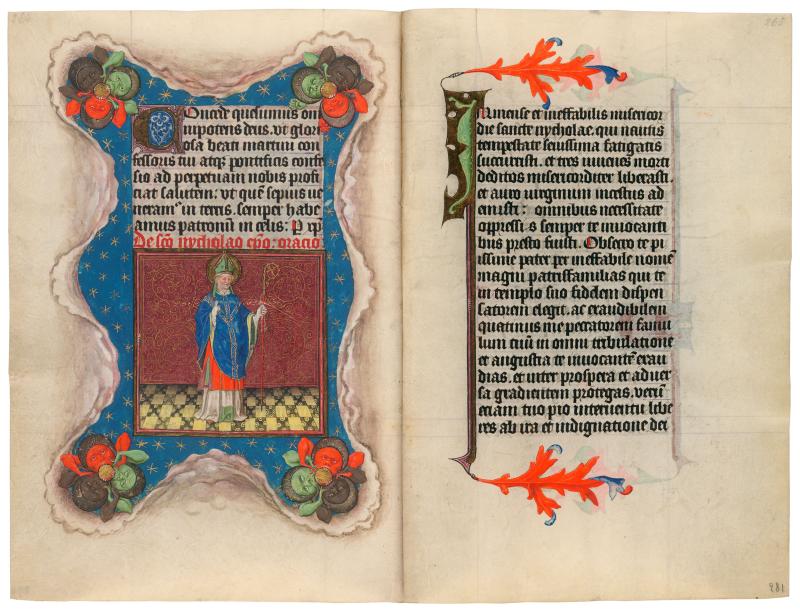
St. Nicholas
Purchased on the Belle da Costa Greene Fund with the assistance of the Fellows, 1963
In rich episcopal garb, but without any of his usual attributes, Nicholas stands in the tiled and textiled background seen so often in these pages. He carries a crozier in his gloved left hand and gives a blessing with his right. "Three" is an important number in many of the legends from Nicholas' life and posthumous miracles. The three small monsters at each corner of the border may refer to a number of different tales. They gnaw on small golder orbs, which may allude to the story of Nicholas' generosity to a man inclined to prostitute his three daughters, as he could not supply them with a dowry. Nicholas provided, anonymously and on three separate occasions, a bag full of gold to ensure that this terrible fate would not befall them. Another possible explanation is that the orbs and silver crescent hats of the monsters represent the sun and moon, attributes of the saint's role as spreader of light to the world. The trompe-l'oeil effect of peeling back cloud-like strips of vellum to reveal a starry sky could be a navigational allusion and representation of the calm skies sought by sailors, of whom Nicholas was patron.
